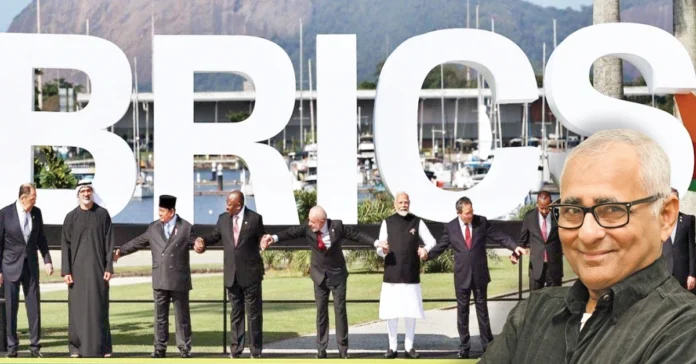By Inderjit Badhwar
In a world increasingly shaped by new alliances and shifting power equations, the question of where India stands—and more importantly, how it chooses to navigate these changing dynamics—has taken on a new urgency. That is why we’ve chosen to put India’s evolving role in BRICS on our cover this week.
For years, BRICS was dismissed in the West as an acronym in search of an agenda—a convenient grouping of emerging economies with disparate ambitions. Yet, the recent summit proved that while contradictions remain, the bloc is not only holding together, but also beginning to punch above its weight. From trade and digital infrastructure to energy security and global governance reform, BRICS is slowly, but surely becoming a platform of strategic consequence.
India finds itself at the heart of this transformation.
As our cover story argues, this is not just a story about a regional grouping gaining muscle. It is a story about India’s ability to walk a fine diplomatic line—leveraging its BRICS membership to amplify its leadership among the Global South, even as it deepens strategic ties with the West, particularly the United States. That balancing act is far from simple. With former US President Donald Trump threatening additional tariffs on Indian goods and painting BRICS as “anti-American,” New Delhi must move carefully, resisting ideological posturing while staying true to its core pursuit: strategic autonomy.
There’s another reason this story resonates now. India assumes the BRICS chairmanship in 2026, a symbolic and substantive moment that could shape the next phase of the group’s evolution. As the world moves from a unipolar to a more multipolar order, India’s leadership will be scrutinized not just for what it brings to the table, but for how it mediates between competing visions—those of the West and those of its fellow BRICS members, particularly China and Russia.
We also believe this story carries deeper significance in the broader conversation around global equity. At a time when traditional Western-led institutions are struggling with credibility and inertia, BRICS offers an alternative forum for pushing forward overdue reforms. That includes India’s long-standing demand for a permanent seat on the UN Security Council, fairer financial mechanisms, and greater representation for developing nations in the world’s decision-making forums.
Equally, we wanted to examine the limits of alignment. India’s strategic caution on issues like de-dollarisation, for instance, shows that it is not prepared to be swept into confrontational postures. Instead, it seeks pragmatic solutions—such as local currency trade—to bolster financial resilience without triggering geopolitical fallout. This kind of nuanced, layered diplomacy deserves deeper public attention.
As with any major geopolitical shift, the risks are real. Overplaying its hand within BRICS could antagonize critical partners in the West. Underplaying its influence could render India’s leadership symbolic rather than strategic. Either path demands deft statecraft, and as our story reveals, New Delhi is acutely aware of the stakes.
What emerges is a portrait of India as a confident, self-assured actor on the global stage—one no longer content to simply react to great power rivalry, but increasingly shaping the contours of the debate. That, to us, is the real story behind the headlines.
We hope this issue helps decode the complexities of India’s BRICS engagement—and why the choices it makes now could redefine not just the bloc’s future, but the nature of global diplomacy itself.


